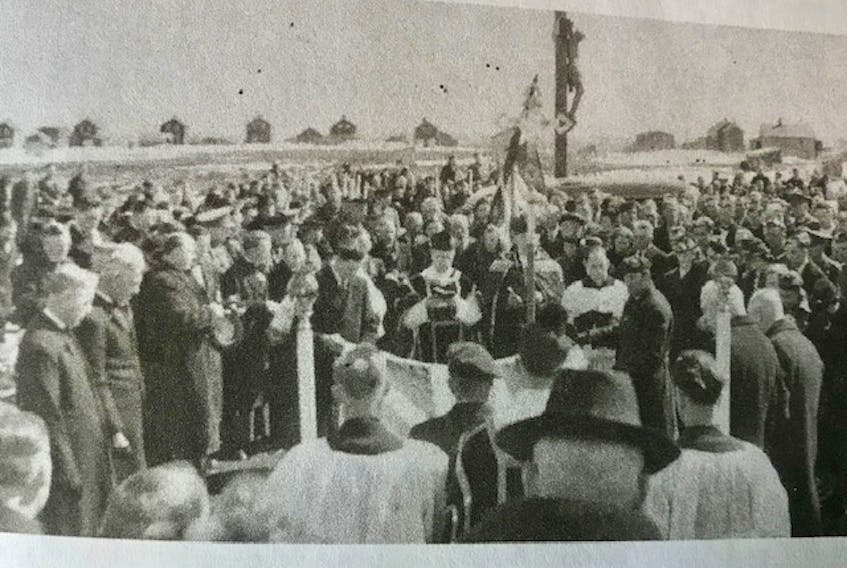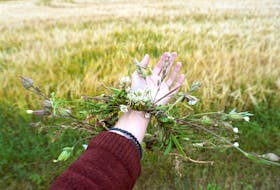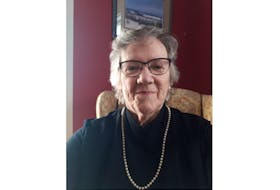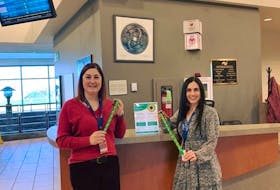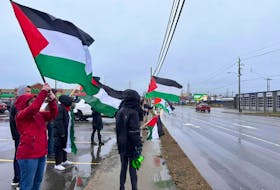Cousins Jimmy Tompkins and Moses Coady were legendary priests from Margaree who advocated for people taking greater control of their lives. They attended St Francis Xavier University and their ideas led to the development of co-operatives, credit unions, adult education classes and a way of life recognized worldwide.
Their story is well known.
So when Joan Tompkins, a niece of Jimmy Tompkins, saw a picture of three priests in the church in Margaree she wondered who the third one was. Her husband Don Bird took it upon himself to find out.

Last year, Bird published a short history of his wife’s uncle, Miles Tompkins, a man who died before she was even born. Miles Tompkins was also involved in the beginning of the Antigonish Movement his cousins are legendary for, but his personal story is the most remarkable.
The first Tompkins people immigrated to Northeast Margaree from Ireland in 1829. Miles was the oldest of seven children born in 1880. When not in school he worked on the family farm. He attended Saint Francis Xavier in the early 1900s where his large body size though short height made him a stalwart of both the football and rugby teams.
Upon graduation, with an arts degree, he worked for Fr. Moses Doyle, the manager of Mount Cameron Farms which grew food for the university. It was also an experimental farm working with different plant varieties.
Through his relationship with Rev. Dr. H.P. MacPherson at the farm, he entered the seminary at Laval, Quebec in 1907. During the summer of 1908, he worked at the agricultural school in Truro. In 1909 he spent the summer at Oka Abbey, another experimental farm near Montreal. In 1910 Tompkins was ordained in Quebec City.
Following ordination, Tompkins studied for two years at the Ontario Agricultural College. He finished his bachelor of science degree in 1912 and took a chemistry teaching position at St FX. He also became manager of Mount Cameron Farm. Tompkins and MacPherson travelled throughout eastern Nova Scotia giving talks on farming methods and began encouraging adult education.
In October 1915, Bishop Morrison told Tompkins he was to go overseas as a military chaplain. He was posted to Camp Bramshott, 50 miles from London. By February, he was in France at a camp on the front line.
Tompkins was a stretcher bearer and helped dress wounds, comfort the dying and bury the dead. He wrote: “only the mercy of God kept me from being killed several times.” Of funerals he wrote, "they would turn the machine guns on us.” He was the most regarded chaplain and insisted on being at the front with the men.

Tompkins was at almost every major battle Canadians were in, including Ypres, the Somme, Vimy Ridge and the capture of Avion. In January 1918 he was awarded the Military Cross by King George. He was noted for “burying the dead often at the risk of his own life through gunfire and shells.” He was shot in the leg in September 1918 and evacuated to England.
While recuperating he visited Denmark to study their agricultural methods. He returned to Margaree in June 1919 after serving as a chaplain for 45 months of which 20 were spent in the trenches.
That July the bishop appointed him manager of Mount Cameron Farm. During this time he began to tour the province discussing the notion of a people’s school. Moses Coady later recognized Miles Tompkins and Rev. Dr. MacPherson as the true pioneers of the Antigonish Movement.
Tompkins was appointed to St. Agnes Church in New Waterford in 1924. He helped build the high school, started a scout troop, built a mission church in Scotchtown, and helped enlarge St. Agnes in 1939-40.
He died in 1940 and it is believed his was the first funeral held in the newly renovated church. The near 1,000 seat church was filled to capacity, thousands lined the streets outside, and 100 priests were in attendance. Six military officers carried his coffin to a 13-gun salute at the graveside.
Father Miles Tompkins was a farmer, an athlete, an innovator, a teacher, a leader, a decorated First World War veteran and lived through the time of the Spanish flu. Take inspiration.
Paul MacDougall is a local writer and senior instructor in Health Studies at CBU.

